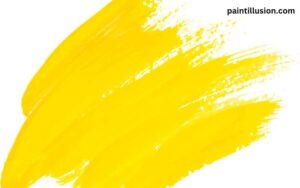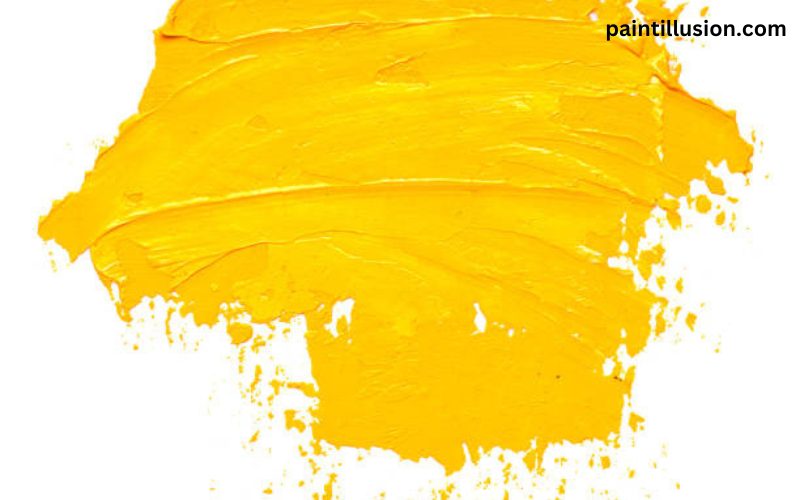When it comes to painting, understanding how to create different colors is essential. One color that is often sought after is yellow. Yellow is a vibrant and cheerful color that can bring life to any artwork. In this article, we will explore various methods for making yellow in paint, from using primary colors to experimenting with different yellow pigments. Whether you’re a beginner or an experienced artist, these techniques will help you achieve the perfect shade of yellow for your artwork.
Understanding the Color Yellow
Before we dive into the methods of creating yellow in paint, it’s important to understand the color itself. Yellow is a primary color, meaning it cannot be created by mixing other colors together. It is a warm color that is often associated with happiness, energy, and optimism. Yellow can range from a pale, almost white shade to a deep, golden hue. By understanding the different shades of yellow, you can better determine which method will work best for your desired outcome.
Different Methods for Creating Yellow in Paint
Using Primary Colors to Make Yellow
One of the most basic methods for creating yellow in paint is by using primary colors. By mixing equal parts of red and green, you can achieve a vibrant yellow hue. This method is known as subtractive color mixing, where colors are created by subtracting certain wavelengths of light. The red and green pigments absorb all other colors except for yellow, resulting in a yellow mixture. Experiment with different ratios of red and green to achieve different shades of yellow.

Experimenting with Different Yellow Pigments
Another method for creating yellow in paint is by using yellow pigments. There are various yellow pigments available, each with its own unique characteristics. Some commonly used yellow pigments include cadmium yellow, lemon yellow, and ochre. Each pigment has its own intensity and undertones. By experimenting with different yellow pigments, you can create a wide range of yellows, from bright and vibrant to soft and muted.
Mixing Yellow with Other Colors to Create Variations
Yellow is a versatile color that can be mixed with other colors to create interesting variations. By mixing yellow with white, you can create a lighter shade of yellow, perfect for highlights or creating a sense of brightness. Mixing yellow with black will result in a darker shade of yellow, ideal for shading or creating depth. Additionally, mixing yellow with other colors such as blue or red can create unique shades of green or orange, respectively. Don’t be afraid to experiment and explore the possibilities that mixing yellow with other colors can offer.
Tips for Achieving the Perfect Shade of Yellow
Creating the perfect shade of yellow can be a challenging task. Here are some tips to help you achieve the desired result:
- Start with a small amount of pigment and gradually add more until you reach the desired shade. It’s easier to darken a color than to lighten it, so start with a lighter shade and gradually add more pigment as needed.
- Use a clean palette and brushes for each color you mix. This will prevent any unwanted color contamination and ensure a true representation of the yellow shade you are trying to achieve.
- Take note of the properties of the yellow pigments you are using. Some pigments may be more transparent, while others may be more opaque. Understanding these properties will help you better control the opacity and intensity of your yellow paint.
Common Mistakes to Avoid When Making Yellow Paint
While creating yellow in paint can be an exciting process, there are some common mistakes that artists make. Here are a few to avoid:
- Overmixing: Mixing colors for too long can result in a muddy or dull yellow. Avoid overmixing by gently blending the colors until you achieve the desired shade.
- Using too much pigment: Adding too much pigment to your paint can result in a thick and pasty consistency. Start with a small amount and gradually add more as needed.
- Neglecting to clean brushes: Failing to clean your brushes properly can lead to color contamination. Clean your brushes thoroughly between colors to ensure a true representation of the yellow shade you are trying to achieve.
Exploring the Versatility of Yellow in Artwork
Yellow is not only a vibrant and cheerful color but also a versatile one. It can be used in various ways to create different effects in artwork. Here are some ways to explore the versatility of yellow:
- Highlighting: Use yellow to highlight certain areas of your artwork, drawing attention to specific details or creating a sense of brightness.
- Contrast: Pair yellow with contrasting colors such as purple or blue to create a visually striking composition.
- Warmth and Energy: Yellow is often associated with warmth and energy. Use it to evoke specific emotions or create a lively atmosphere in your artwork.
Conclusion
Creating yellow in paint can be a rewarding and creative process. By understanding the color yellow, experimenting with different methods and pigments, and avoiding common mistakes, you can achieve the perfect shade of yellow for your artwork. Remember to explore the versatility of yellow and use it to enhance your compositions. Whether you’re a beginner or an experienced artist, these techniques will help you unlock the potential of yellow in your artwork. So grab your paints, mix some yellow, and let your creativity shine.
CTA: Get started on your next artwork and experiment with different shades of yellow. Let the vibrant and cheerful color bring life to your creations.

